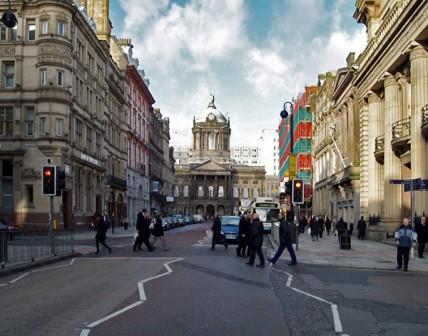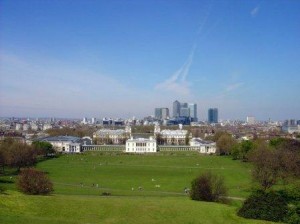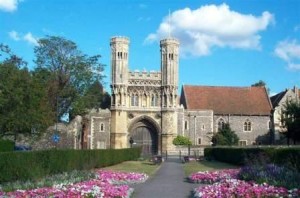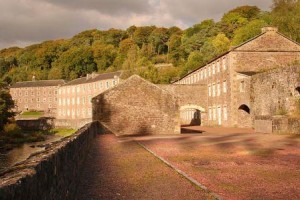
Castle Street, Liverpool
Liverpool World Heritage Site is formally known as Liverpool Maritime Mercantile City and became a WHS in 2004. There are six areas within the city of Liverpool that form the basis of the WHS in recognition of its importance and significance in its role as a commercial port and the influence it had in many areas. For visitors the area covered under the World Heritage Site offers the chance to see some well known tourist attractions along with a number of interesting places of cultural, historical and social significance. The WHS status in 2004 preceded the title for the city as the European Capital of Culture in 2008, the city has benefited from increased awareness and interest among tourists at the range of attractions on offer here and helped with the regeneration of the city that is enjoying a renaissance.
Overview
Liverpool World Heritage Site has plenty to offer visitors, the six designated areas that form the WHS offer a number of attractions for visitors to explore. The city has plenty of history, culture and heritage, there are a number of historic buildings for fans of history with more Grade I and II listed buildings than any other city in the UK apart from London. Liverpool has played a leading role as a commercial port over many years and was at the vanguard of developing dock technologies and port management. During the days of the British empire the city was used as a major port for transporting goods and people
Liverpool played an important role in the growth of the British Empire and became the major port for trade and the mass movement of people. The six areas in the city that are designated as part of the WHS relate to the historic role the city has had as an important and influential commercial port. The city was a pioneer in the development of modern dock technology, transport systems and port management. These 6 areas of the city were part of the development of one of the world's major trading centres in the 18th and 19th centuries, and house a great number of significant commercial, civic and public buildings.
Liverpool World Heritage City includes 6 areas of the city which relate strongly to its historic role as a commercial port. The six areas are, the Albert Dock, Castle Street (Commercial Centre), Duke Street/Ropewalks, William Brown Street (Cultural Quarter), Pier Head and the Stanley Dock.
Today the six areas are used for different purposes to which they were originally built, reflecting the changes in the economy, de industrialisation and social change however the architecture of the buildings and the areas along with the character has remained despite the passing of time.
The Albert Dock Conservation Area is a central point for tourism in the city, the famous area in the city is home to a number of tourist attractions that include the Tate Liverpool art gallery, Liverpool Maritime Museum and the Beatles Storey. The dock was opened in 1846, the dock warehouses were the first warehouses to be fireproof due to their construction materials. The docking buildings and warehouses have a wealth of history with a number of listed buildings. The area has been redeveloped and regenerated in recent years to include housing, shops and businesses. The area has maintained its maritime character and history and offers visitors can see some great views.
The Commercial Centre/Castle/Dale/Old Hall Street, is an area in the city centre that would have been where medieval Liverpool was centred. The streets in the area are, Castle Street, Dale Street, Old Hall Street, Victoria Street and Water Street. The streets form the basis of much of the commercial activity in the city with a number of businesses based there. The importance of the area lies in its commercial value, street developments over the years and its acclaimed buildings and architecture.
Duke Street Conservation Area/Ropewalk consists of the Ropewalk site located to the south of the city centre, that includes two warehouses on College Lane and the Bluecoat Chambers on School Lane. The area was among the first areas that were developed as Liverpool expanded and became an important port city. The area had warehouses and residential houses built here with its close proximity to the Old Dock, the area then became more cosmopolitan with a number of people from different walks of life residing there.
Pier Head forms the centre point of the waterfront and has a number of famous buildings and landmarks synonymous with Liverpool. Here visitors will find the Cunard Building, the Port of Liverpool building and the Royal Liver building, known collectively as the Three Graces, each is renowned for its distinctive architecture and are famous symbols of Liverpool. The Royal Liver building is among the most famous sights in Liverpool distinctive for the two Liver birds located on top of the towers. The waterfront scene to greet visitors is an impressive one and the three main buildings here are in contrast to the warehouses and commercial buildings that are found elsewhere in the city.
The Stanley Dock Conservation Area is located north of Pier head and was the focal point of the docks in Liverpool. There are a number of large warehouses and docks with both water-filled and dry graving docks, there is also the Stanley Dock Tobacco Warehouse, one of the largest brick buildings in the world, the 14 storey building stands at over 120 feet and is an imposing presence. The area is an important forms an important part of Liverpool's heritage as a port city.
The Cultural Quarter/William Brown Street, forms the centre point for the major public buildings in the city, St George's Hall built in the 19th century is among the best known and has been acclaimed for its neo-classical architecture.
The William Brown Street area is the central point for many of Liverpool's civic buildings forming a so called 'cultural quarter'. Amongst the buildings that are focal to this part of the WHS are St Georges Hall, Lime Street Station, the Walker Art Gallery, the World Museum Liverpool, the former Great North Western Hotel and the entrance the Queensway Tunnel. To the north of the area is the former County Sessions Court, the Picton Library, the World Museum Liverpool (formerly the William Brown College of Technology) and the Walker Art Gallery. The buildings are distinctive and offer an insight in to the many classical, architecturally and culturally significant buildings that are present in the city.
A visit to the World Heritage Site in Liverpool offers visitors the chance to visit a range of tourist attractions of cultural and historical significance. The city is enjoying a renaissance evidenced by the European Capital of Culture title in 2008 that helped to reinvigorate the city and make its attractions, cultural and historical more visible and accessible to tourists.
How To Get There
The World Heritage Site in Liverpool is accessible by car and public transport:
By Car:
Liverpool is well connected on the UK Motorway network, the M62 from Manchester takes you to Liverpool, the M53 from Ellesmere Port also takes you to Liverpool and the WHS. From the North the M58 southbound takes you to Liverpool too.
By Train:
The main train station is located in the city centre at Liverpool Lime Street there are regular services from London Euston station with a journey time of approx 2 hours 45 minutes. There are regular trains from Manchester to Liverpool Lime Street, the journey time is approx 40 minutes.
Local train services are available from Mersey Rail connecting the Liverpool stations with others in the Wirral and Chester.
By Bus/Coach:
There are a number of coaches from towns and cities that take passengers to Liverpool. National Express offer a range of services in to and out of Liverpool city centre, including services from London Victoria Bus station to Liverpool city centre, the journey time is approx 5 hours.
For budget bus travel, MegaBus offers good value deals from London and other locations in the UK to Liverpool at discounted rates.
There are a number of local bus routes that serve the city centre area and the World Heritage Site areas.
Contact Details
Address:
08 Place (City Centre Tourist Information)
Whitechapel
Liverpool
L1 6DZ
United Kingdom
Telephone: +44 (0)151 233 2008
Website: Liverpool World Heritage Site
Facilities and Information
Further Information:
For further information on the city and the surrounding areas see Merseyside Guide for tips for travellers on Liverpool & Merseyside including local Attractions, Places of Interest, Local Hotels, Restaurants and Entertainment venues.
Map
View Larger Map
For Local Search and Directions see: Liverpool World Heritage Site Map
Tips & Other Considerations
There may be some variations on the opening hours of the various visitor attractions, depending on the time of year and other factors. Visitors are advised to double check each attraction they wish to see before going & avoid disappointment.
When travelling follow travel safety tips & remain alert and aware of your surroundings and environment. Ensure your belongings in particular your wallet/purse and valuables are hidden away from public view (especially at tourist attractions & places with crowds). If you have a bag try to use a shoulder bag with a good quality, strong strap, that is put across your shoulder not on your shoulder making it more difficult for anyone to take your bag.
If you are travelling by car to Liverpool, ensure you are well prepared with maps and Sat Nav to aid your journey, particularly if you are not familiar with the local area and roads. There may be a number of no entry roads, traffic control systems in operation and road works, it is recommended drivers exercise caution and drive safely. Use the Route & Journey Planner for door to door directions for car and public transport journeys.
If you are looking for local car parking at the WHS site, ensure you fully understand the rules, regulations & charges for car parks and street parking before you park your car. The rules & regulations can be complex if you are not sure it is wise not to park there.
If you are travelling by public transport, check for service updates prior to beginning your journey for any delays, disruption or cancellations to services that may impact on your journey. Ensure you have the service timetables for the trains, buses and coaches. Remember when the last services are and ensure you make it to the train/bus/coach stops well in time to avoid missing the service.
Disclaimer: The information given in on this website is given in good faith and to the best of our knowledge. If there are any discrepancies in no way do we intend to mislead. Important travel details and arrangements should be confirmed and verified with the relevant authorities.




